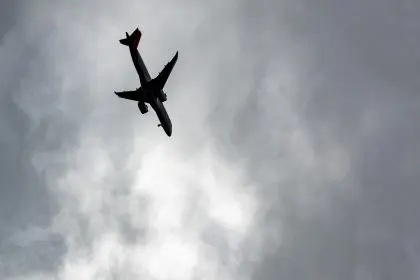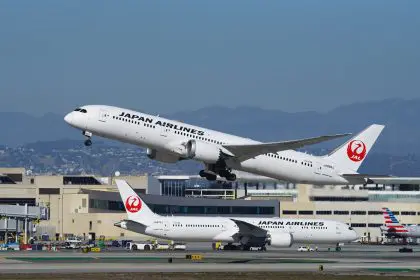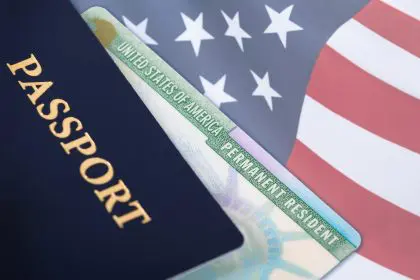The airline industry operates on complex pricing algorithms designed to maximize revenue from every passenger, creating a system where identical seats on the same flight can vary by hundreds or even thousands of dollars. Understanding how these pricing mechanisms work reveals opportunities for significant savings that most travelers never discover.
Professional travel agents, airline employees, and frequent business travelers have developed sophisticated strategies for navigating airline pricing systems to secure dramatically lower fares. These insider techniques exploit gaps in airline pricing logic and take advantage of system quirks that airlines prefer to keep hidden from general consumers.
Most travelers accept published airfare prices without realizing that airlines use dynamic pricing models that constantly adjust based on demand patterns, booking behaviors, and competitive factors. This fluid pricing system creates windows of opportunity for substantial savings when travelers understand how to identify and exploit them.
The difference between paying full price and securing insider rates often comes down to timing, routing knowledge, and understanding airline business models. These professional secrets can transform expensive dream trips into affordable realities while enabling more frequent travel on limited budgets.
Secret 1: Hidden city ticketing exploits routing inefficiencies
Airlines price tickets based on demand for specific routes rather than actual distance traveled, creating situations where flights with connections can cost significantly less than direct flights to intermediate cities. This pricing anomaly allows savvy travelers to book longer routes and simply exit at their intended destination.
The strategy works because airlines compete differently on various routes, with some destinations serving as major hubs where competition drives down prices. A flight from New York to Los Angeles with a connection in Denver might cost less than a direct New York to Denver flight, even though the traveler wants to go to Denver.
Implementation requires booking the longer route and simply not boarding the connecting flight to the final destination. This technique works best for one-way tickets since missing a flight segment typically cancels remaining portions of round-trip bookings. Travelers must also avoid checking bags since luggage goes to the final ticketed destination.
Airlines discourage this practice through their terms of service, but enforcement remains inconsistent and penalties are rare for occasional use. The most significant risk involves frequent use that creates patterns airlines might detect and respond to with account restrictions or fare adjustments.
Major hub cities offer the best opportunities for hidden city ticketing since they serve as connection points for numerous routes. Cities like Atlanta, Chicago, Dallas, and Denver frequently appear as intermediate stops on routes to more expensive final destinations.
Secret 2: Fuel dumping creates accidental bargain fares
Complex international routing combined with airline partnership agreements occasionally creates pricing errors where adding segments actually reduces total ticket costs. These “fuel dump” routes exploit inefficiencies in airline pricing systems to generate dramatically discounted international fares.
The technique involves adding seemingly unnecessary flight segments that trigger lower pricing tiers due to routing classifications or partnership agreements between airlines. A direct flight from New York to London might cost more than a routing that goes New York to London to Berlin and back to London, allowing travelers to skip the final segments.
Successful fuel dumping requires understanding airline alliances and partnership pricing structures that create these anomalies. Certain combinations of airlines and destinations consistently produce these pricing errors due to revenue-sharing agreements and competitive pricing strategies.
These opportunities typically appear on complex international routes involving multiple airlines and alliance partners. The pricing errors often last only hours or days before automated systems correct them, requiring quick action when opportunities are identified.
Online communities dedicated to travel hacking maintain databases of successful fuel dump routes and share information about newly discovered opportunities. These resources help travelers identify current opportunities without spending extensive time searching for pricing anomalies.
Secret 3: Positioning flights unlock premium destination savings
Expensive destinations often have significantly cheaper departure points in nearby cities, making it worthwhile to book separate flights to these alternative airports before continuing to final destinations. This positioning strategy can reduce total travel costs by hundreds or thousands of dollars.
European destinations exemplify this strategy well, with flights from secondary cities often costing dramatically less than those from major hubs. Flying from a smaller European city to Asia might cost half the price of the same route from London or Paris, making it worthwhile to position there first.
The technique works particularly well for premium cabin travel where price differences between departure cities can be enormous. Business class flights from certain cities cost less than economy flights from expensive departure points, making positioning flights extremely valuable for luxury travel.
Successful positioning requires researching fare differences from various nearby cities and calculating total costs including positioning flights, accommodations, and transfer time. Sometimes the savings justify overnight stays in positioning cities, effectively adding free stopovers to trips.
Budget airlines serving secondary airports often provide the most cost-effective positioning options. These carriers typically offer point-to-point service that works well for reaching alternative departure cities without paying premium airline prices.
Secret 4: Airline pricing cycles reveal optimal booking windows
Airlines adjust prices following predictable patterns based on booking data, competitive responses, and demand forecasting models. Understanding these cycles allows travelers to time purchases during price valleys rather than peaks, securing significantly lower fares.
Most airlines release new inventory and adjust prices on Tuesday evenings, creating opportunities for lower fares on Wednesday mornings before competitors respond with matching adjustments. This weekly cycle provides regular opportunities for savings when travelers monitor prices consistently.
Seasonal pricing patterns follow predictable schedules based on historical demand data. Airlines typically release lowest prices 6-8 weeks before departure for domestic flights and 8-12 weeks for international routes, before gradually increasing prices as departure dates approach.
Competition-driven price wars create temporary opportunities for exceptional savings when airlines match or undercut competitor pricing. These price wars typically last only days or weeks before airlines establish new equilibrium pricing levels.
Sales events and promotional pricing follow airline financial calendars, with major sales typically occurring during quarterly low-demand periods. January, September, and early December consistently offer the best promotional pricing opportunities across most airlines.
Secret 5: Multi-city bookings cost less than round-trip tickets
Airlines price multi-city itineraries differently than round-trip tickets, often resulting in lower total costs even when travelers only visit one destination. This pricing quirk allows creative routing to reduce airfare costs while potentially adding free stopovers.
Open-jaw tickets that fly into one city and depart from another frequently cost less than traditional round-trip fares. A ticket flying into Rome and departing from Milan might cost less than a round-trip Rome ticket, allowing ground travel between cities while saving money.
Multi-city routing can add destinations at minimal additional cost when airlines price segments independently. Adding a third city to a two-city itinerary sometimes costs only the taxes and fees for the additional segment rather than full airfare pricing.
International multi-city tickets often provide better value than domestic combinations due to different pricing structures and competitive environments. Complex international routing frequently generates pricing opportunities not available on simpler domestic routes.
Stopover programs offered by certain airlines allow extended stays in hub cities at no additional airfare cost. These programs enable travelers to visit multiple destinations for the price of a single round-trip ticket by taking advantage of natural connection points.
Secret 6: Currency arbitrage exploits international pricing differences
Airlines price tickets differently across various countries and currencies, creating opportunities for significant savings when booking through foreign websites or using alternative payment methods. These price differences can exceed 50% for identical flights and service levels.
VPN services allow travelers to appear as though they’re booking from different countries, accessing local pricing that may be dramatically lower than home country rates. Airlines often price tickets based on local economic conditions rather than uniform global pricing.
Alternative currency booking can provide savings even without VPN usage when airlines accept international bookings at favorable exchange rates. Some airlines offer better pricing when payments are processed in specific currencies due to payment processing agreements.
Foreign airline websites sometimes offer promotional pricing unavailable through domestic booking channels. These localized promotions target specific markets and may not be advertised or available through global booking platforms.
Third-party booking sites based in different countries may access wholesale pricing or special agreements not available through direct airline bookings. These international booking platforms sometimes offer significantly lower prices than official airline websites.
Secret 7: Airline mistake fares provide extraordinary savings
Airlines occasionally publish dramatically incorrect fares due to human error, system glitches, or currency conversion mistakes. These mistake fares can offer savings of 80-90% off regular prices but require quick action and understanding of airline policies.
Monitoring mistake fare communities and alert services helps travelers identify these opportunities quickly before airlines correct the errors. These communities share information about discovered mistake fares and provide guidance on successful booking strategies.
Successful mistake fare booking requires immediate action since airlines typically correct errors within hours of discovery. Having payment information ready and being flexible with travel dates increases chances of securing mistake fares before corrections occur.
Airlines handle mistake fares differently, with some honoring bookings while others cancel tickets and refund payments. Understanding individual airline policies helps travelers assess risks and make informed decisions about pursuing mistake fare opportunities.
International mistake fares often provide the best opportunities since complex routing and currency conversions create more opportunities for significant errors. These international mistakes frequently offer premium cabin travel at economy prices or long-haul flights at domestic pricing levels.
Secret 8: Loyalty program manipulation maximizes value
Airline loyalty programs contain hidden opportunities for earning elite status, accessing upgrade inventory, and securing preferred pricing that casual members never discover. Understanding program mechanics allows strategic accumulation of benefits without corresponding flight activity.
Status challenges and fast-track promotions provide shortcuts to elite status without extensive flying requirements. These limited-time opportunities allow strategic travelers to achieve top-tier status through targeted activity rather than organic flight accumulation.
Partner airline bookings can provide better elite qualifying credit and upgrade opportunities than mainline carrier bookings. Alliance partnerships and codeshare agreements create opportunities for accelerated status accumulation through strategic airline selection.
Credit card partnerships offer opportunities to earn elite status and benefits through spending rather than flying. These programs allow strategic accumulation of miles, status credits, and upgrade certificates through everyday purchases rather than extensive travel.
Award booking strategies using partner airlines can provide access to premium cabin inventory unavailable through direct bookings. These partnerships allow redemption of miles for flights and upgrades that aren’t available through the issuing airline’s own inventory.
Implementing insider strategies safely and effectively
Successful implementation of these insider secrets requires understanding both opportunities and risks associated with each strategy. Airlines may discourage certain practices through policy restrictions or account limitations for travelers who exploit pricing inefficiencies too aggressively.
Documentation and booking confirmation become crucial when using unconventional booking strategies that airlines might question or challenge. Maintaining records of legitimate bookings helps resolve disputes and demonstrates good faith travel intentions.
Backup planning ensures travel continuity when strategies involve risks like missed connections or canceled bookings. Having alternative routing options and flexible booking arrangements prevents disruptions when primary strategies encounter problems.
Gradual implementation allows travelers to gain experience with insider techniques while minimizing risks associated with aggressive optimization. Starting with lower-risk strategies builds confidence and knowledge before attempting more complex or potentially controversial approaches.
Professional travel agents specializing in complex routing can help implement sophisticated strategies while managing risks and ensuring compliance with airline policies. These specialists often have access to tools and inventory not available to individual travelers.
The airline industry’s complex pricing structures create numerous opportunities for significant savings when travelers understand how to navigate these systems effectively. These insider secrets represent just the beginning of advanced travel optimization strategies that can transform expensive travel dreams into affordable realities.
Success with these techniques requires patience, flexibility, and willingness to invest time in learning airline pricing mechanics. The potential savings often justify the learning curve, especially for frequent travelers or those planning expensive international trips where percentage savings translate to substantial absolute amounts.


















